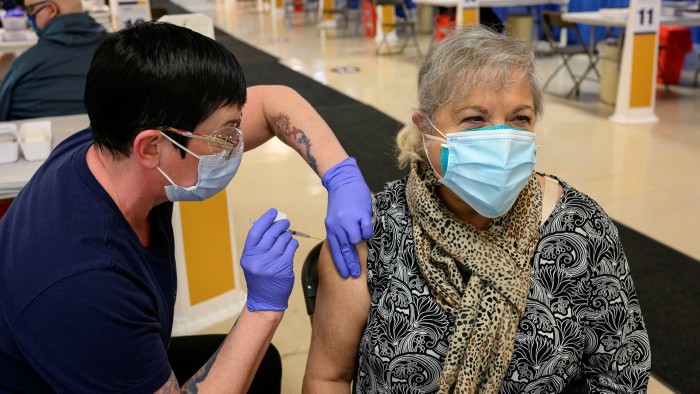Investors should see past inflation pick-up

Roula Khalaf, Editor of the FT, selects her favourite stories in this weekly newsletter.
The writer is North American economist at Pimco
Over the next several months, investors should expect to witness an adjustment in consumer prices in the US, which will feel a lot like a lasting shift in inflation.
The March US consumer price index report confirmed the first step of this expected adjustment, with core inflation up 0.3 per cent month on month. Readings for April and May could be similar. Headline inflation is likely to accelerate up to 3.5 per cent year on year by May — the fastest pace in a decade.
Higher commodities prices, trade bottlenecks and projections for the fastest growth rate in 40 years have contributed to concerns about overheating, which could become more acute as economic activity picks up alongside a better public health outlook.
Financial markets appear to be pricing in a chance that the US Federal Reserve will be more aggressive with raising interest rates than it is currently telegraphing.
Yet as the economy further normalises over the second half of 2021, we expect sequential growth in real economic activity and prices to slow, moderating the year-on-year pace of inflation. Price pressures are likely to level off as vaccination rates increase, shipping and supply pathways clear, and durable goods purchases ease.
We expect to see core CPI inflation end the year running modestly below 2 per cent. Though that gauge is expected to accelerate to 2.2 per cent in 2022, differences in index construction mean that the Fed’s preferred core personal consumption expenditures price measure will lag. This might be all the markets need to moderate expectations for tighter Fed policy.
The Fed’s policymaking committee is projecting core PCE inflation of 2.2 per cent at the end of this year, 0.5 percentage points above our forecast. Based on the comments of policy-setting committee members, it appears the Fed is expecting a somewhat larger lag between the time that supply comes back on line after pandemic-related disruptions, and when demand accelerates.
Though a perfect storm of factors contributed to global factory and shipping bottlenecks, the brunt of the price increases from these issues has likely already happened, and we are sceptical that the situation will worsen enough to drive core inflation 0.5 percentage points higher than we now expect over the coming months.
With container ship freight rates already at multiyear highs and retailers passing on additional costs to consumers, we wonder how much more inflation should be expected. Retail goods inflation has already risen back to flat after declining 1.5 per cent year on year in May 2020. Our forecasts see that pace climbing to 2 per cent on the next several months — the fastest in more than 10 years.
Yet we do not expect persistent inflation. Consumers substituted services for durable goods in 2020. In 2021, we expect demand for durable goods will likely cool somewhat as more people are vaccinated and resume consuming services. This could mitigate the ability of retailers of those goods to pass on higher costs. In turn, this could offset inflationary pressures in other service categories, such as airfare and lodging.
Those categories should see strong recovery as travel resumes. But hotels and airfare each account for less than 1 per cent of CPI, not enough to drive the trajectory for US inflation.
By contrast, shelter represents one-third of the CPI basket. US home prices have increased 11 per cent over the past year amid demand for more space away from large city centres. However, US statistical agencies consider buying a home an investment and, instead, use rental rates to measure changes in the cost of shelter — even for homes that are owner-occupied.
As a result, rent and owners’ equivalent rent are more sensitive both to trends in labour markets and to how expensive owning a home is versus renting. Rental inflation is down to 2.0 per cent year on year as of March, from 3.3 per cent before the pandemic, according to the Bureau of Labor Statistics. The labour market recovery should support demand for renting as will rising interest rates by making home ownership less affordable for some. But rental increases will not be as strong as house price inflation.
Worries about inflation have helped propel US bond yields higher in the past six months. In the near term, each new economic data point may seem to hint further at accelerating growth.
We believe recovering demand should help prices normalise this year. But while government stimulus measures will likely close the gap between actual and potential GDP this year, we do not expect a large and persistent overshoot of that shift to contribute to runaway inflation.
Allison Boxer of Pimco contributed to this article
Comments